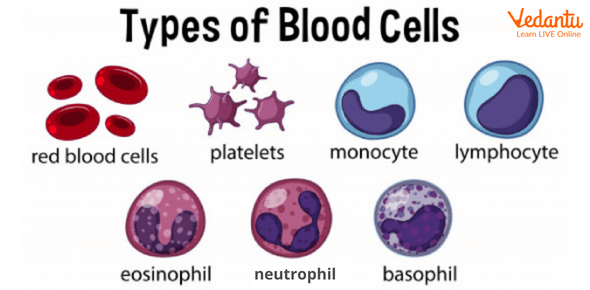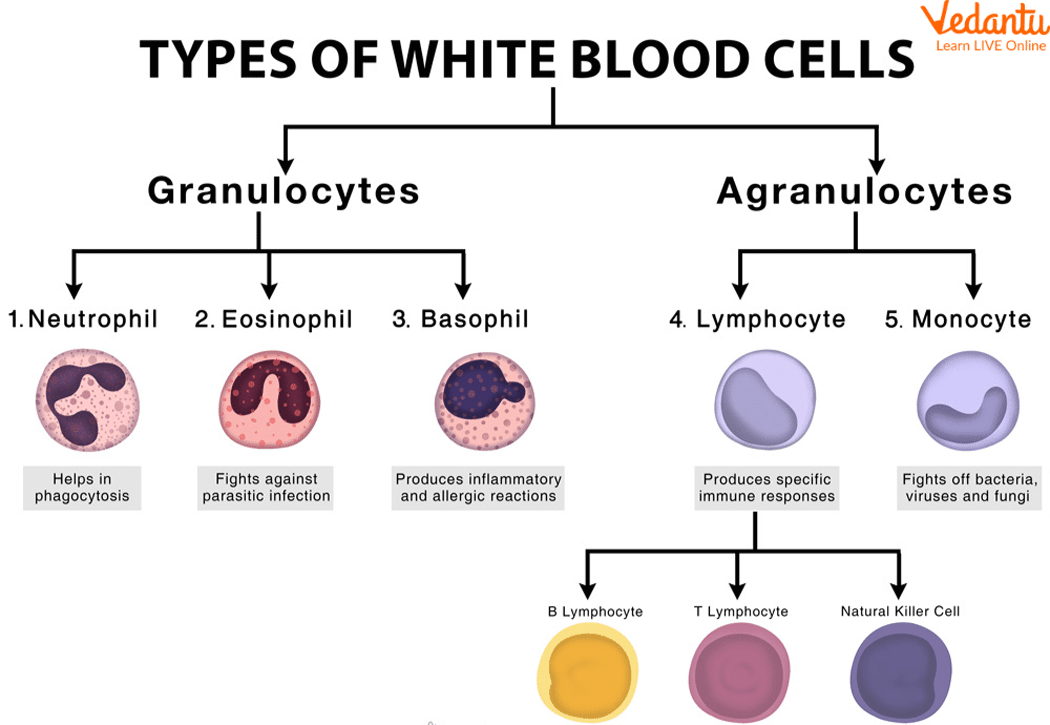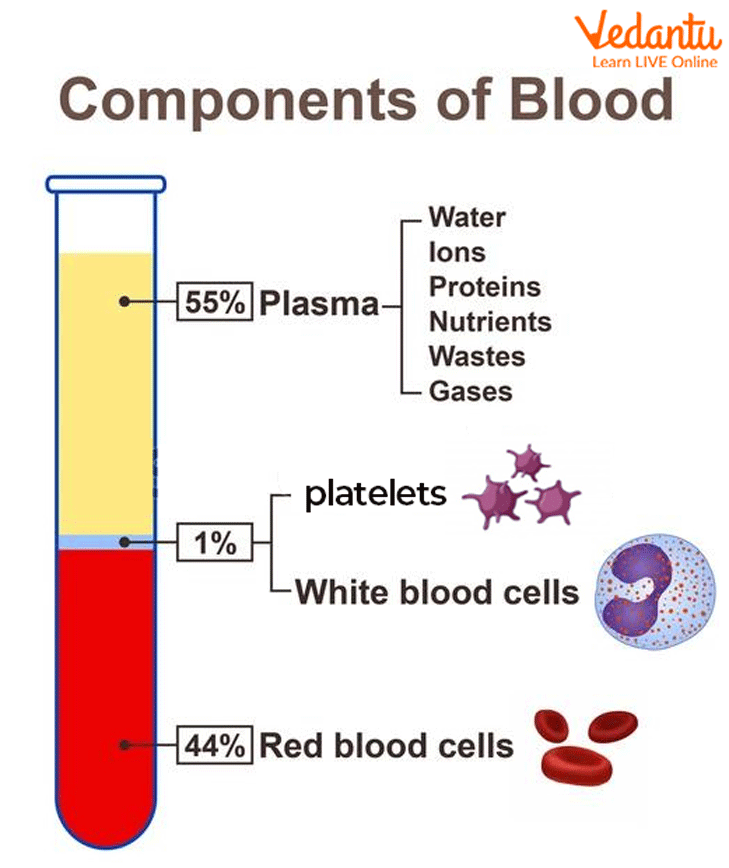




An Introduction to Circulatory System
Blood is the most widely used bodily fluid in higher creatures, including humans, for the transportation of waste or toxic elements. Lymph, another body fluid, also aids in the transport of certain substances.
Blood is a specialised connective tissue made up of a fluid matrix, plasma, and cellular components known as formed elements. The plasma accounts for roughly 55% of the blood, while the produced components account for the remaining 45%. In this article, we are going to study the circulatory system, blood and its components, red blood cells’ function and white blood cells’ function.
Blood and Its Components
Blood is a fluid that circulates through the vessels of the circulatory system. In humans, it consists of plasma (the liquid portion), blood cells (both red and white), and platelets, which are cell fragments. The main component of blood is plasma, which is mostly water with proteins, ions, nutrients, and wastes mixed in. Red blood cells are in charge of transporting oxygen and carbon dioxide. Platelets are in charge of blood clotting. White blood cells are immune system components that aid in an immune response.
Types of Blood Cells
The blood contains formed elements and plasma.
The formed elements include blood cells and blood platelets
The blood cells contain RBC and WBC.
WBC are of two types: Granulocytes and Agranulocytes.
Granulocytes are further classified into three types: Monocytes, Eosinophils, and Basophils.
Agranulocytes are of two types: Monocytes and Lymphocytes.

Types of Blood Cells
Plasma
Plasma is a straw-coloured, viscous fluid that forms the blood's matrix.
The composition of plasma includes-
1. Water: Water accounts for 90-92 per cent of the plasma.
2. Proteins: They make up roughly 6-8 per cent of it. The main plasma proteins are fibrinogens, globulins, and albumins.
3. Minerals: Mg2+, Na+, Cl-, Ca2+, HCO3-
4. Glucose, amino acids, lipids, etc.
Formed Elements
RBC
Red blood cells or RBCs are often known as erythrocytes.
Erythrocytes are the most numerous of all blood cells.
A healthy adult male contains 5- 5.5 million RBCs per millimetre of blood.
RBCs in most animals are biconcave in form and lack a nucleus. They are oval in camels and llamas (although without a nucleus). Their distinct form is related to their function of oxygen transport.
Since red blood cells lack a nucleus and other organelles, there is a greater area for haemoglobin. They respire anaerobically and do not utilise any of the oxygen they transport because they lack mitochondria.
Red blood cells also include the enzyme carbonic anhydrase, which is involved in carbon metabolism.
The function of RBC is to carry oxygen from the lungs to the rest of the body.
WBC
Leucocytes (white blood corpuscles or WBCs): Leukocytes are colourless due to a lack of haemoglobin. Leucocytes are substantially less numerous than erythrocytes, which average 6000-8000 mm of blood.
Leukocytes have nuclei and other cell organelles and move like amoebae. Due to this capacity, leukocytes can pass through capillary wall pores and go to an infection site. Diapedesis is the migration of leukocytes across capillary walls.
Unless stained, leukocytes are nearly undetectable under the microscope. As a result, they are classed based on their staining qualities. There are two types of WBC-Granular leukocytes and granulocytes are leukocytes with granules in their cytoplasm, while those without clearly visible granules are agranular leukocytes or agranulocytes.
The life span of WBC is 10-15 days.
White blood cells' function is to protect our body against infection.
Granulocytes
Eosinophils: Eosinophils (2-3%) have a two-lobed nucleus. They include hydrolytic enzymes and peroxidases in the form of granular granules. Antihistaminic characteristics are possessed by eosinophils. They are resistant to infections and have been linked to allergic responses. During allergic disorders, such as asthma and hay fever, the number of eosinophils rises.
Basophils: They account for just 0.5-1% of total WBCs. The nucleus of these cells is typically three-lobed. Serotonin, heparin (an anticoagulant), and histamine (a substance linked to allergic reactions) are all secreted by the cells.
Neutrophils: These are the most numerous cells of the WBCs (60-65%). They have phagocytic characteristics. They frequently squeeze between the capillary wall cells and roam across the intercellular gaps. They then spread to diseased regions of the body. They absorb and consume pathogenic microorganisms.
Agranulocytes
Agranulocytes are classified into two types: lymphocytes and monocytes.
Lymphocytes: Lymphocytes constitute 20-25% of total WBCs and are the second most abundant form of leucocyte. They are small cells with spherical nuclei and a limited amount of cytoplasm. They are responsible for the body's immunological responses and come in two types: B and T lymphocytes.
Monocytes: The biggest leukocytes have an amoeboid structure. They have nuclei that are kidney-shaped. Monocytes enter the tissues from the circulation and mature into macrophages. Macrophages are phagocytic, engulfing bacteria and other cellular waste.

Types of WBC (Leukocytes)
Thrombocytes (Blood platelets)
Thrombocytes are the tiniest components of formed elements.
Blood generally contains between 1,50,000 and 3,50,000 platelets per millilitre of blood.
Thrombocytes are cell fragments, not whole cells. Their bodies are spherical or oval discs. They lack nuclei and are made up of a few cell organelles and secretory granules.
Lifespan - Blood platelets have an average lifespan of around a week. They are eliminated through the spleen and liver.
Function - They are essential for blood coagulation. Platelets may emit a range of chemicals, the majority of which are involved in blood coagulation. They make up the majority of the clot's bulk and activate the clotting factors in plasma, resulting in the creation of threads.
Function of Blood
Erythrocyte haemoglobin is important in the transport of respiratory gases. Haemoglobin rapidly interacts with oxygen to generate oxyhaemoglobin. Oxyhaemoglobin quickly releases oxygen in tissues where it is utilised for food breakdown or oxidation.
RBCs transfer carbon dioxide from tissues to the lungs as well. Haemoglobin transports CO2 as carbamino-haemoglobin.
Components of Blood
The composition of blood contains several cellular structures. When a blood sample is rotated in a centrifuge machine, it separates into three components: plasma (55%), buffy coat (1%), and erythrocytes (44%). The buffy coat includes platelets and WBCs.

Components of Blood
Conclusion
Blood is a type of connective tissue that consists of a fluid matrix called plasma as well as solid components. Plasma is a straw-coloured, sticky fluid that makes up roughly 55% of blood. There are generally 3 types of blood cells – RBC, WBC, and platelets. WBCs are further of 5 types- Eosinophil, Basophil, Neutrophil, Monocytes, and Lymphocytes.
FAQs on Circulatory System - Important Concepts for NEET
1. Why are RBCs red in colour?
Haemoglobin is an iron-containing protein found in all vertebrate erythrocytes, or Red blood cells (RBC). Each haemoglobin molecule comprises four subunits: two alpha subunits and two beta subunits. Each subunit encircles the core iron-containing heme group and attaches to one oxygen molecule. Due to the interaction between iron and oxygen, blood cells appear red. As a result, the presence of haemoglobin accounts for the red colour of red blood cells.
2. How many litres of blood are in the human body?
The amount of blood that circulates within an individual is determined by their size and weight, although the average human adult contains roughly 5 litres of circulating blood. The average adult individual has 4.5 to 5.6 litres of blood in their body. Blood is approximately 10% of an adult's weight. Women often have less blood volume than males. During pregnancy, however, a woman's blood volume rises by around 50%.
3. What are the most important questions from this topic?
In the NEET examination, questions are mostly asked about the red blood cells' functions, white blood cells' functions, the composition of these cells, the red blood cells diagram, and the difference between the diagrams of different white blood cells. A student must know what platelets are and the differences among the different types of cells. They should make a proper table to revise these concepts. A student should prepare smartly by making mind maps and sticky notes and should do multiple revisions of the NCERT textbooks.
















